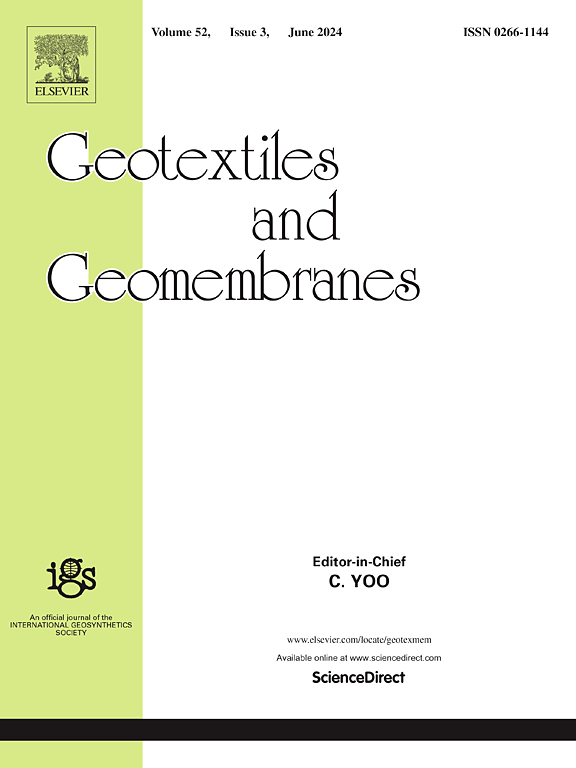边界法向刚度在土工膜-砂界面细观力学行为中的作用:数值研究
IF 6.2
1区 工程技术
Q1 ENGINEERING, GEOLOGICAL
引用次数: 0
摘要
采用三维离散元法研究了边界法向刚度对土工膜界面剪切性能的影响。开发了一种鲁棒且高效的算法,并将其应用于直接剪切数值模型中,有效地捕获了在大范围的边界法向刚度值范围内砂-土工膜界面行为的关键方面。将界面剪应力和体积变化随剪切位移的体响应与实验数据进行对比,验证了数值模型的正确性。在微观尺度上,研究了颗粒位移、旋转、接触网络演化、配位数、冗余因子和弹性刚度张量,揭示了法向刚度对界面响应的影响。微观力学的见解,如更高水平的几何和力学各向异性的发展,更强的界面联锁以抵抗砂粒的滑动和滚动,以及增加的局部密度和体刚度,与宏观响应有关,解释了更高的边界法向刚度如何提高界面抗剪强度和剪切过程中的法向应力。本文章由计算机程序翻译,如有差异,请以英文原文为准。
The role of boundary normal stiffness in the micromechanical behavior of geomembrane-sand interface: A numerical study
Three-dimensional discrete element method (DEM) is employed to investigate how boundary normal stiffness influences the shearing behavior at the soil-geomembrane interface. A robust and efficient algorithm was developed and implemented into direct shear numerical models, effectively capturing the key aspects of the sand-geomembrane interface behavior across a wide range of boundary normal stiffness values. The numerical model was validated by comparing the bulk responses of interface shear stress and volume change versus shear displacement with experimental data. At the microscale, particle displacements, rotations, contact network evolution, coordination number, redundancy factor and elastic stiffness tensor were investigated to shed light on the impact of normal stiffness on the interface response. The micromechanical insights, such as the development of higher level of geometrical and mechanical anisotropy, stronger interface interlocking to resist sliding and rolling of sand particles, and increased local density and bulk stiffness, are connected to the macroscopic response, explaining how higher boundary normal stiffness enhances interface shear strength and normal stress during shearing.
求助全文
通过发布文献求助,成功后即可免费获取论文全文。
去求助
来源期刊

Geotextiles and Geomembranes
地学-地球科学综合
CiteScore
9.50
自引率
21.20%
发文量
111
审稿时长
59 days
期刊介绍:
The range of products and their applications has expanded rapidly over the last decade with geotextiles and geomembranes being specified world wide. This rapid growth is paralleled by a virtual explosion of technology. Current reference books and even manufacturers' sponsored publications tend to date very quickly and the need for a vehicle to bring together and discuss the growing body of technology now available has become evident.
Geotextiles and Geomembranes fills this need and provides a forum for the dissemination of information amongst research workers, designers, users and manufacturers. By providing a growing fund of information the journal increases general awareness, prompts further research and assists in the establishment of international codes and regulations.
 求助内容:
求助内容: 应助结果提醒方式:
应助结果提醒方式:


